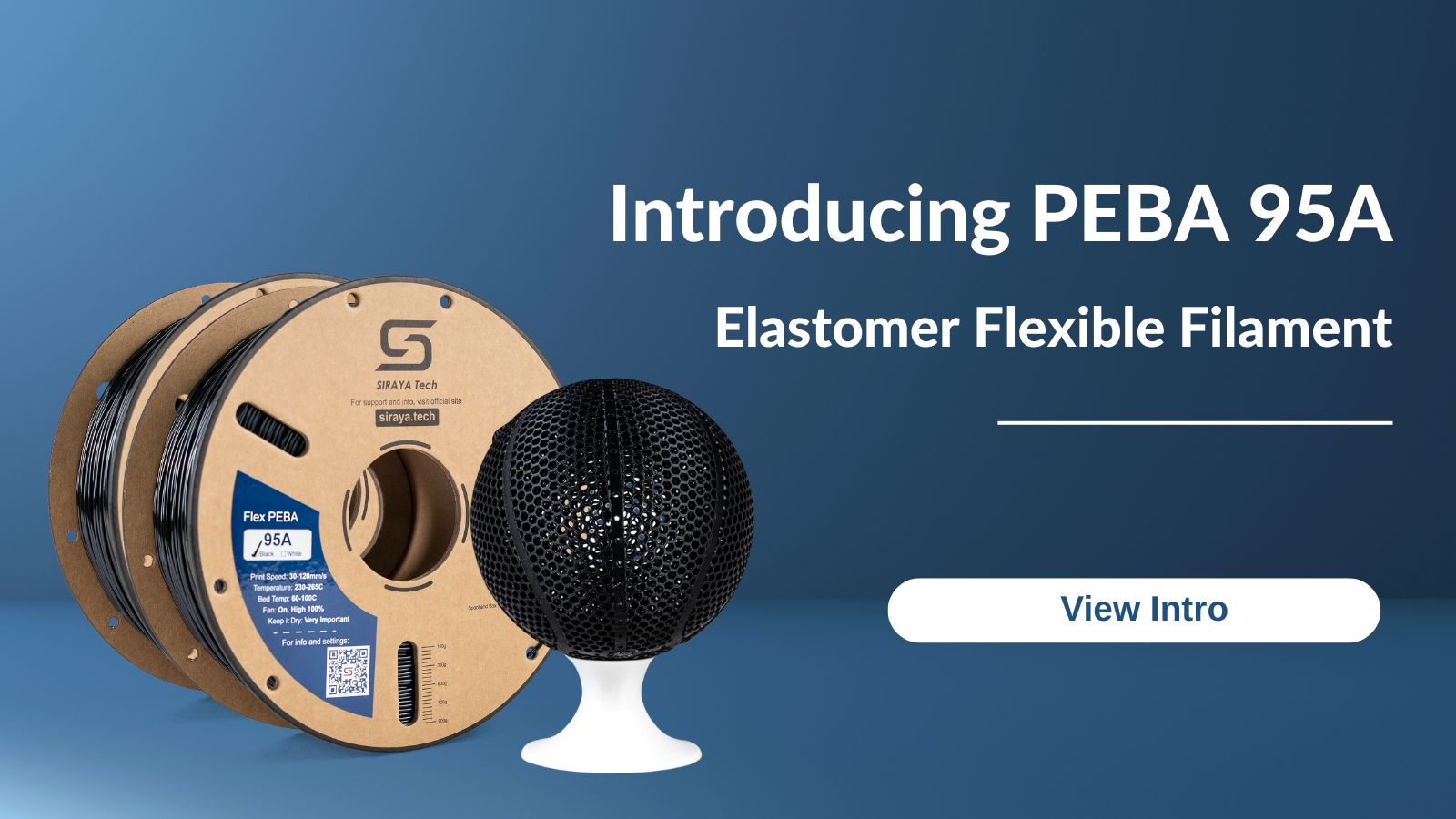In the rapidly evolving world of 3D printing, a new material is making waves and setting a higher standard for performance, flexibility, and durability. You may have seen it mentioned in relation to next-generation athletic footwear or advanced industrial components. It's called PEBA, and it’s not just another flexible filament—it's a game-changer. For those who have pushed the limits of TPU, it's time to meet what many are calling "Super TPU."
This article will dive deep into what PEBA is, its history as a high-performance polymer, and why it's emerging as a superior filament for demanding 3D printing applications.
What Exactly is PEBA (Polyether Block Amide)?
PEBA, short for Polyether Block Amide, is a high-performance thermoplastic elastomer (TPE). At its core, PEBA is a block copolymer, meaning it’s made by fusing two different types of polymer blocks, each bringing its own unique strengths to the table.
- The Polyamide (PA) Block: This is the "nylon" component. It provides the material with structural integrity, toughness, chemical resistance, and thermal stability. Think of it as the strong, rigid backbone of the filament.
- The Polyether (PE) Block: This is the flexible elastomer component. It’s responsible for the incredible elasticity, low-temperature flexibility, low density, and, most importantly, the phenomenal energy return or "bounce" that sets PEBA apart.
By masterfully combining these hard and soft segments, PEBA delivers the best of both worlds: the strength and resilience of an engineering-grade plastic and the extreme flexibility and rebound of rubber.
A Brief History: From High-Performance Gear to Your 3D Printer
PEBA isn't a new invention; it has a rich history of use in some of the most demanding industries long before becoming a 3D printing filament. Developed decades ago by researchers at companies like Arkema (under the famous Pebax® brand) and Evonik (as VESTAMID® E), PEBA quickly became the material of choice for applications where performance was non-negotiable.
Its first major successes were in the high-end sporting goods industry. Because of its unique combination of lightness, flexibility, and outstanding energy return, PEBA was used to create top-tier ski boots, athletic shoe soles, and other sports equipment where performance and resilience are critical. It has also been a staple in the medical field for devices like catheters and in the automotive industry for components that need to withstand fatigue and chemicals.
The transition to 3D printing was a natural evolution. As additive manufacturing moved from simple prototyping to producing functional, end-use parts, the demand for higher-performing materials grew. Experts began developing PEBA into filament and powder forms, bringing its unique advantages to designers and engineers everywhere.
Why PEBA is the "Super TPU"
While Thermoplastic Polyurethane (TPU) is an excellent and widely used flexible filament, PEBA elevates performance on several key metrics, earning it the "Super TPU" nickname.
1. Unrivaled Energy Return (The "Bounce")
This is PEBA’s signature feature. While TPU is flexible, it tends to absorb and dampen energy. PEBA, on the other hand, stores and returns it. For 3D printing, this means parts printed in PEBA don't just bend; they snap back to their original shape with incredible speed and force. This makes it the perfect choice for dynamic applications like drone components, robotic grippers, or functional athletic equipment, where TPU often falls flat.
2. Lighter Weight
PEBA is one of the lightest engineering thermoplastic elastomers available. Its density is often 15-20% lower than that of standard TPU. For applications where every gram counts—such as in aerospace, competitive sporting goods, or wearable technology—printing with PEBA can lead to a significant reduction in part weight without sacrificing strength or performance.
3. Superior Flexibility, Even at Low Temperatures
PEBA maintains its flexibility and impact resistance across a wide range of temperatures, performing exceptionally well in cold environments where other elastomers can become stiff and brittle. This makes it ideal for outdoor gear or components used in harsh conditions.
4. Robust Chemical and Fatigue Resistance
Thanks to its polyamide backbone, PEBA offers excellent resistance to a wide range of chemicals, oils, and solvents, surpassing many standard flexible filaments. Furthermore, it is highly resistant to damage from repeated stress and cyclic loading, ensuring parts have a long and reliable service life.
The Amazing Advantages of PEBA as a 3D Printing Filament
When you translate these core properties to FDM/FFF 3D printing, PEBA filament unlocks new possibilities:
Truly Functional, Dynamic Parts: Move beyond simple flexible prototypes to end-use parts that need to perform under stress, absorb impacts, and provide high-rebound action.
Lightweight Strength: Print strong, durable parts that are significantly lighter than their TPU or TPC counterparts.
Excellent Layer Adhesion: PEBA has been formulated for additive manufacturing, resulting in strong bonds between layers for more durable and reliable prints.
Design Freedom: The unique combination of toughness and elasticity allows for the creation of intricate designs with thin walls that can bend and stretch without breaking.
Conclusion
PEBA represents a significant leap forward for flexible filaments. It bridges the gap between standard elastomers and high-performance engineering materials, offering a unique combination of properties that were previously unattainable in a single filament. For creators, engineers, and innovators looking to push the boundaries of what's possible with 3D printing, PEBA is more than just an alternative—it's an upgrade.


2 comments
Jason
What should I use as a support interface with PEBA? I can’t find any information on it other than Chat GPT says there isn’t a good interface material. Please help.
802 Garage
Now this looks awesome! I’ve been looking for some of the most durable and flexible filament possible that still maintains shape well. Lots of potential for automotive parts I think. Thanks!